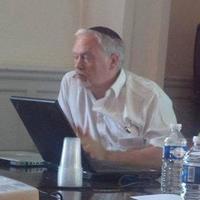- Jewish Cultural Studies, Early Modern Jewish History, Sephardic Jewish Heritage, Spanish and Portuguese Jews, Prosopography, Jewish Languages, and - Influences on curriculum and professional curriculum within higher education; notions of professionalism and how professionalism is conceptualised in curriculumedit
The early 9th century Carolingian manuscript of the Epistola Anne ad Senecam was discovered by B. Bischoff in the Archiepiscopal library of Cologne and published by him 1984. It is a short, incomplete Latin text of some ninety lines that... more
The early 9th century Carolingian manuscript of the Epistola Anne ad Senecam was discovered by B. Bischoff in the Archiepiscopal library of Cologne and published by him 1984. It is a short, incomplete Latin text of some ninety lines that Bischoff identified as a late antique Jewish missionsschrift addressed to certain unidentified fratres. There is little agreement in the current literature on the identity of the author or the addressee(s), nor on the date of its composition, and it has been proposed that the text is in fact Christian. The titulus has been taken as a later interpolation with no relation to the work. There have been two subsequent editions (Jacobi and Hilhorst) and a German translation (Wischmeyer) all dependent on Bischoff?s editio princeps. No extended study of the text has been published. The present study reexamines the text and presents a corrected edition of the Latin from the original manuscript together with an English translation. An analysis of the latinity...
Research Interests:
Research Interests:
Research Interests:
Research Interests:
Research Interests:
Manasseh Ben Israel’s Thesouro dos Dinim was first published in four parts in 1645-6 with a fifth part following in 1647, and was widely and popularly distributed, being reset and republished as late as 1710 by Immanuel Athias. A... more
Manasseh Ben Israel’s Thesouro dos Dinim was first published in four parts in 1645-6 with a fifth part following in 1647, and was widely and popularly distributed, being reset and republished as late as 1710 by Immanuel Athias. A comprehensive compendium of halacha based on the Shulchan Aruch (Venice, 1565, (with Isserles’ Mappa 1578)), the Thesouro preceded other popular compendia of the Shulchan by nearly a century and was printed at a time when the authority of the Shulchan was still very much in question. It is one of the small number of books written in Portuguese and evidently intended mainly for the communites of Portuguese former conversos. In this paper I look at the structure of the Thesouro, its relation to the Shulchan Aruch and the Mappa (on both of which the Thesouro is silent), the languages used ((judeo-?)Portuguese, Ladino and Hebrew), and the Thesouro’s role in the rejudaization of the conversos of Amsterdam.
Key words: Judeo-Portuguese, Rejudiasation, Halachic works, Manasseh Ben Israel.
Key words: Judeo-Portuguese, Rejudiasation, Halachic works, Manasseh Ben Israel.
